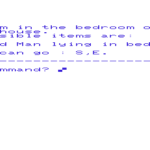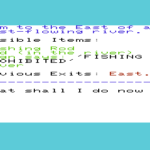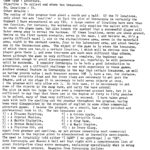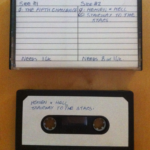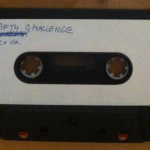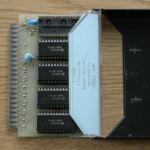1984 Terminal Software
Platform: Commodore Vic 20
This is a smaller piece intended for inclusion in The Games That Weren’t book that didn’t make the final cut. As a result, please note that it hasn’t been professionally proof read compared to the published pieces in the book. As part of our Bonus material series, here is the full raw article for your enjoyment, as well as new downloads and extras.
The Commodore Vic 20 was a product of inspiration, following when Jack Tramiel first saw Sir Clive Sinclair’s drive and enthusiasm to make home computers more affordable to the general public in the United Kingdom with the release of the ZX80 in 1980. Unimpressed with the lack of colour and a proper keyboard, Jack pushed his team to produce a low cost computer with all of those features, and with the aim of making “computers for the masses, not the classes”.
Even though it came with a limited 5K of RAM (expandable via the cartridge slot), it proved an extremely successful and major hit for Commodore[1]. As with the Spectrum, it gave many the perfect opportunity to get involved with computers, but also in the creation of games. This in particular was the case for a young Mike Taylor in the early 1980’s.
“I started programming on a friend’s TRS-80. On that machine, I played Scott Adams’ Adventureland, and I was instantly in love.” he began. “When I was about thirteen years old, I started doing a milk round to earn the money to buy my own computer. By Christmas 1981, I’d accumulated about £140, and for Christmas my parents gave me the rest of the money that I needed to make it up to the list-price of the VIC-20 – a number engraved forever in my mind, £189.95.”
As with many early home computer adopters, it didn’t take long until Mike was busy writing his own programs. After creating a series of simple games in BASIC, the 3.5K was found to be insufficient for what Mike was ultimately trying to achieve. With a lack of funds available since his new acquirement, a friend of Mike constructed a homebrew memory expansion especially for him, constructed ingeniously inside a cassette case.
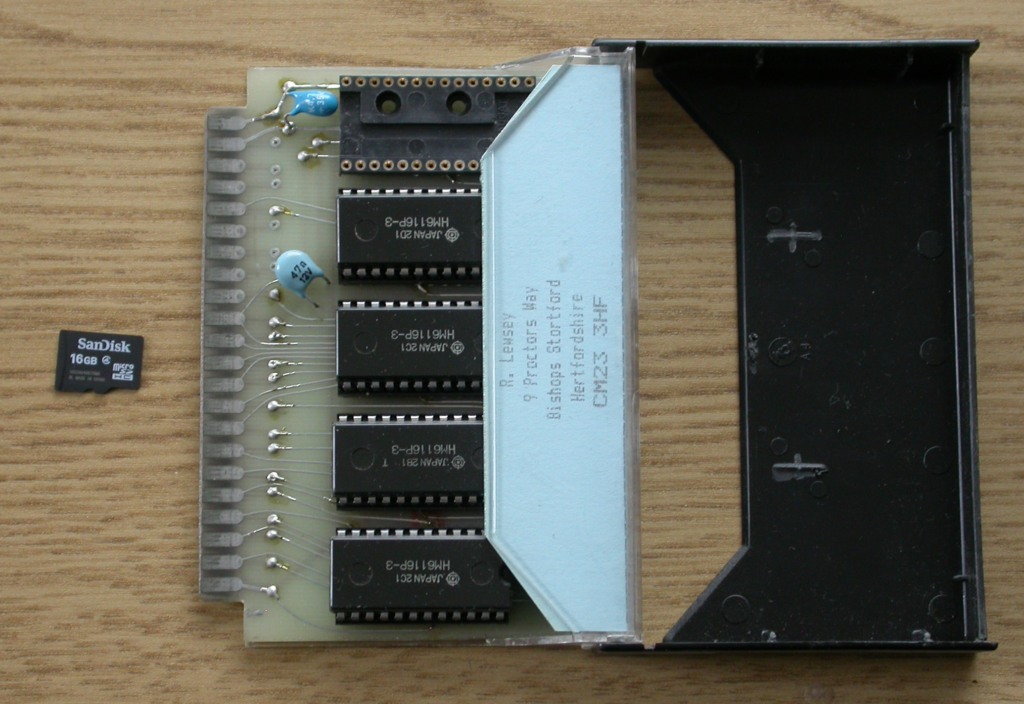
“Armed now with a full 11.5 Kb, I was ready to start making some real programs, and what moved me most was Adventure games.” explained Mike. He started off by creating his own partial re-implementation of Scott Adam’s Adventureland to get a feel for what he needed for his very own adventure game. From that point on, it wasn’t too long until Mike had completed his first fully fledged adventure game called Magic Mirror.
Released in 1982, written in BASIC and requiring an 8K memory expansion, Magic Mirror was the start of an ambitious plan for a five game series. Unsurprisingly, the game was heavily inspired by the works of Scott Adams, and featured save game functionality and a strong parser that allowed for abbreviations. It was a solid start by Mike, and which was felt good enough to see publication.
“Getting a 16k expansion was a big moment for me, effectively tripling the size of the games I could build!”
“This was back in the heady days of cottage-industry software sold by mail-order adverts in the back pages of magazines.” explained Mike. “Things were so informal that when I wrote to Terminal Software to order a copy of their Skramble game, I mentioned in passing that I had an adventure game for the VIC-20, and would they like to see it. They did!” Terminal Software[2] were suitably impressed, and agreed a publishing deal right away, and at the age of just 14, Mike had become a commercial games developer.
Before Terminal Software had even been approached, Mike was already busy working on the next games in the series – starting with Nosferatu (and named after a Blue Oyster Cult[3] song), which was promptly published again by Terminal Software shortly after Magic Mirror.
“I had my game mechanics all worked out, and I was on a roll with the plotting. “, recalled Mike. “My system was pretty primitive, looking back at it now: the programs were written in BASIC. I didn’t have an interpreter that ran game files, I just wrote a new BASIC program each time, though of course with much common code. That’s arguably less efficient (though my games were about the same size as the ones Scott Adams was producing using his interpreter), but definitely more flexible than any interpreter can be.”
Although primitive, Mike’s technique of developing adventure games would evolve and improve as each game was developed. Within just a matter of months, he had produced the remaining three games in the planned series – Heaven and Hell, Stairway to the Stars and The Fifth Challenge. Unbeknown to Mike, the remaining titles in the series were to be never going to be experienced by adventurers.
Heaven and Hell was named after the Black Sabbath song of the same name. The idea was to start on Earth, get yourself killed and progress to Hell, eventually find Jacob’s ladder, and then climb into Heaven. Mike suggested that his theology has moved on a bit since then.
The game was the most difficult of the series, though not intentionally, and was due to experimentation that Mike carried out. If for instance you made a mistake at a certain point in the game, then you would find the game would be intentionally impossible to complete at a later stage. “In retrospect, it was a terrible, terrible idea.” reflected Mike. “It was in contravention of what’s now recognised as one of the cardinal rules of game design – don’t let the player get into a position where the game can’t be finished. I hope that, had this ever gone through to publication, Terminal would have persuaded me to have changed it.”
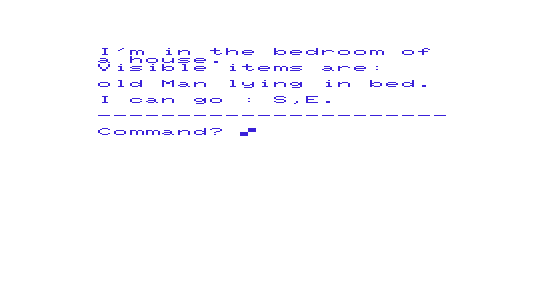
More positively though, the game would fix a major bug bear of Mike’s. Adventure games at the time often came with poor and limited feedback on poorly constructed commands/phrases – often with simple feedback such as ‘CAN’T’ or ‘OK’. With Heaven and Hell, Mike aimed to set this right by including a comprehensive list of around thirty-five clear error messages to help explain to the user exactly what was wrong. This user-friendly approach would be carried over to the other two remaining games.
The next title, Stairway to the Stars, was named after another Blue Oyster Cult song and resolved the issues with Heaven and Hell; coming back to something a little less cruel and closer to the original two games. Details about the fourth game in the series are slightly sketchy, due to the amount of time passed and author memories blurring.
But as implied by the title, the aim of the adventure was to get as high as possible, by climbing ladders, beanstalks and other obstacles. It was at this stage that Mike was beginning to struggle to cram everything into the available 8K, so the final game of the series was to rectify this issue.
The final title, The Fifth Challenge was Mike’s ‘magnum opus’ on the Vic 20, bringing together all his experience into a big series finale, and now requiring a 16K RAM expansion as a result. “Since I didn’t own a 16k board, I had to borrow one from a school-friend, Richard Monk, in order to write it. Getting a 16k expansion was a big moment for me, effectively tripling the size of the games I could build!” Mike explains. “The goal with The Fifth Challenge was just to relax into that space and make something that was less obsessively puzzle-focussed and have a bit of atmosphere.”
The idea of the game was to collect and store ten treasures that are found, with around 40-50 puzzles that had to be solved to succeed. With the added RAM, there were around 54 locations to explore in all, around 10 being scenery locations to contribute to the plot. “I remember it somehow being invested with a strong sense of atmosphere, and having more-interesting-than-average puzzles. I particularly remember a tricky initial portion, necessary to get into the caves where the game took place, and a huge underground cavern with trees growing in it.” Mike recalled.

Mike also informed us that the game was originally was going to be called Cornucopia, perhaps inspired by another rock song? “I wish I remembered.” he responded. “The earlier games were mostly named after rock songs, but I don’t know a song called Cornucopia, and can’t think that it was a reference to a song of a different name.” Further research reveals that Black Sabbath released a song of the same name in 1972, and is very likely therefore to have been the source – a change of name though was clearly to give some closure to the series.
By the time Nosferatu was published, and whilst finishing The Fifth Challenge, Terminal Software were not keen to publish any more text adventure games. Only approximately 1000 copies of Magic Mirror were sold according to Mike, and it’s believed that Nosferatu (plus two other text adventure games by other developers[4]) didn’t fare much better.
Terminal Software were having far better luck with arcade titles such as Skramble and Gridder, and so decided to focus on that area. It meant that the remaining games of the series were left in complete limbo, but Mike pressed on regardless to finish the final title. “As far as I remember, Terminal Software never even got to see the games” he recalled.
Mike managed to dig out a pitch document for The Fifth Challenge and provided a copy to show here. It’s plausible therefore that the remaining three games were pitched to other companies, though Mike could not recall if that was the case or who they may have been pitched to. Whichever the case, the games were not picked up by anyone else and would remain unreleased.
Around the time of the rejection from Terminal, Mike purchased a new Commodore 64 from the money made on Magic Mirror and Nosferatu. After completing The Fifth Challenge, It wasn’t long until he got to work on producing a game on the new hardware. Making use of compiled BASIC, Mike created The Causes of Chaos – an intriguing and sprawling multi-player adventure game. The game was picked up by CRL and published in 1985, but this would be the last commercial game produced by Mike.
“It was a wonderful feeling to wander back into places that I last saw more than three decades ago…”
Leaving the industry, Mike found a more stable career to pay the bills, leaving adventure game development as a side-hobby for his own enjoyment. “I’ve been a programmer for my whole professional life.” explained Mike. “I have a lovely job with Index Data, a tiny multinational software house of 13 people of seven different nationalities working in six different countries. I’m also a palaeontologist in my spare time — I work on sauropod dinosaurs!”
In the years that passed since Mike’s publishing days with Terminal Software, the final three games of the series were something of a distant memory. Recollections on his website were just that, with the three games missing for many years.
Miraculously, a tape was discovered around 2009 with all three games stored on and attempts were swiftly made by the Vic 20 community to try and preserve the contents [5]. Unfortunately, the data had deteriorated so badly, that at this point in time Stairway to the Stars cannot be yet preserved and could be lost forever. Preservationist Tom Roger Skauen feels that the game had never been readable in the first place. Chances are slim therefore of the game being recoverable, though Tom is upbeat and at the time of writing, has some ideas to try one last time to save the game.
Results luckily fared better with Heaven and Hell and The Fifth Challenge, both would eventually be fully preserved much to the relief of Mike and can be downloaded from the links below. “It was a wonderful feeling to wander back into places that I last saw more than three decades ago, and which I’d assumed were gone forever!” he exclaimed, almost tearfully you would expect.
Focus now switches to trying to save Stairway to the Stars with new preservation ideas from Tom. It is hoped that someday it will join and complete the rest of the Magic Mirror jigsaw, so everyone can enjoy the five game series as originally intended by Mike.
If you enjoyed this write up, then please check out the full Games That Weren’t book at https://www.bitmapbooks.com/products/the-games-that-werent
Downloads
Gallery
Footnotes
[1] The Vic 20 was the first computer to sell one million units. The Commodore 64 went slightly better at approximately 13 million units, but then was on the market for far longer.
[2] Terminal Software was founded by Andrew Hieke in 1981, and published games for key 8-bit platforms of the time. In 1985, Terminal was retired and replaced with Binary Design Limited, who focused purely on software development.
[3] Blue Oyster Cult are an American rock band who have been active since 1967, and are still touring today.
[4] Those games were Rescue from Castle Dread and The Curse of the Werewolf. Released in 1983 on the Vic 20.
[5] A combined effort consisting of the author, Mat Allen, Luigi Di Fraia and Bo Goeran Kvamme have made various attempts using a DC2N device built by Luigi. Tom Roger Skauen now trying to recover the remaining game.
